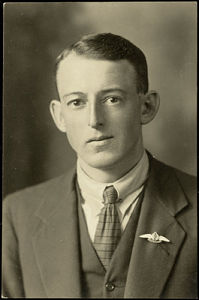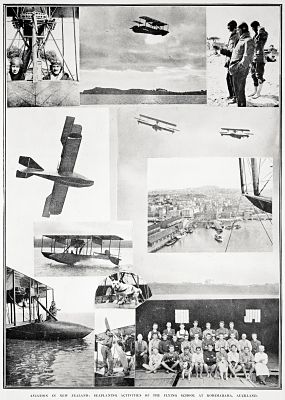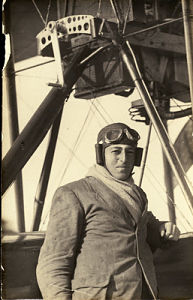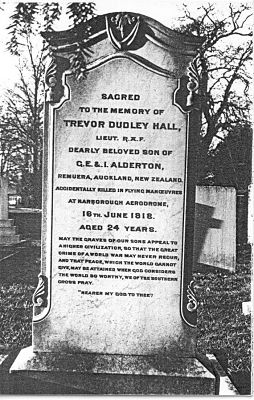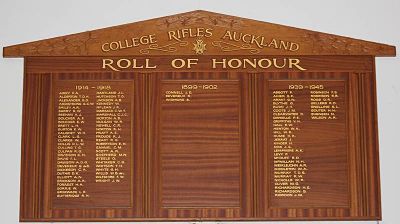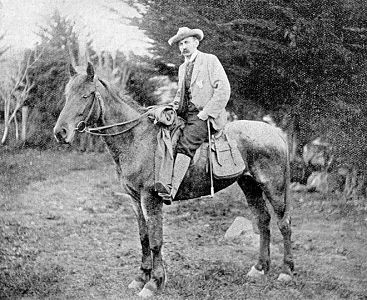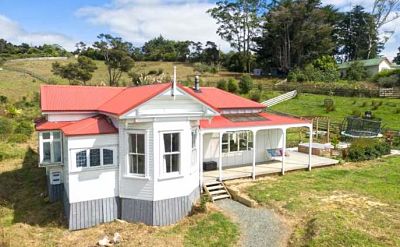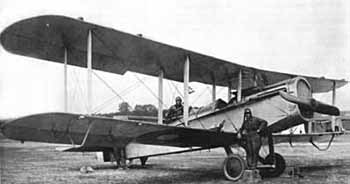WW1 Flight Lieutenant Trevor Dudley Hall Alderton
Trevor Alderton was born on 5 January 1894 in Whangarei, Northland, the son of Ida and George Edwin Alderton, the founder of modern Kerikeri.
His father was a newspaper proprietor and editor, orchardist and land agent, founding the Northern Advocate and the North Auckland Land Development Corporation. The Alderton family moved to Remuera about 1905 to 17 Remuera Road (now 101 Remuera Road). [1]
He attended Parnell School and entered Auckland Grammar School in 1907, being placed in Form IIIA. The following year he won a Senior District Scholarship and finished his school career by passing the Civil Service Entrance Examination with credit and the Matriculation of the Universities of New Zealand and London in 1911. At school, he took a keen interest in shooting; he was a member of the team which won the Campbell Vase in 1909, and represented the School in the Secondary Schools of New Zealand Match the same year. He also won the Grade C Medal for Cadets under 16. [2] Trevor was a member of the College Rifles Rugby Football Club in Remuera and in the Territorial Reserves (NZ Divisional Signallers Company) as a 2nd Lieutenant of the New Zealand Expeditionary Force (NZEF) Unattached List.
Trevor joined the Public Works Department (Engineering Branch) in 1911, and became Assistant Engineer in 1915. He was in charge of work on the Matiere Section of the Main Trunk Railway Line, supervising 120 men in earthworks, construction of reinforced concrete bridges, and supervision of contracts, including one for the Okahukura Tunnel 75 chains (1.5kms) long. He was described by his employers as an energetic and capable engineer, a reliable and an intelligent officer, capable of handling and controlling a large number of men. [3].
He was held in the highest esteem by the Department, and was considered one of the most brilliant young engineers, in the service. His last paper, on reinforced concrete piles, was read before the NZ Society of Civil Engineers after he had left for the Front, and was printed in their proceedings. After successfully “holing” the big tunnel he volunteered for service.
On 14th April 1917, Trevor requested he be allowed to enlist in the New Zealand Expeditionary Force as a private with 6 months leave of absence without pay so that he could qualify at the New Zealand Flying School in Kohimarama for the Aviator’s Certificate. Trevor qualified for his Royal Aero Club’s Certificate on the 6th August 1917 at the Flying School and was called up in the 11th ballot on 12 October 1917. Although he attested for service in the NZEF, he did not serve with that, but through joining the Flying School in New Zealand, he had duly qualified for admission in the Royal Flying Corps.
On the 13th October 1917, he left with the 30th Reinforcements on the Corinthic, arriving in Liverpool on 8 December 1917 to join the Royal Air Force. On the 17th May 1918, Trevor was reported as having completed his training at Reading along with a number of other New Zealanders, and was commissioned 2nd. Lieutenant on 20 May 1918 in 26 Training Squadron.[4] Trevor Alderton was appointed as an instructor a day after completing his training in England. As the best flyer his own instructor had ever put through, Alderton was given charge of incoming students. [5]
On the 16th June 1918, there was a training accident in the 26 Training Squadron, RAF (Narborough, Norfolk – 7th Wing, 3 Group, Training Division). The plane – an Airco DH4 made by De Havilland – suffered engine failure immediately after take-off and stalled on turning back towards the airfield, side-slipping into the ground. The pupil pilot, 2nd Lt J. S. L. Oakes RAF survived, injured but Trevor Alderton as training pilot died in the accident. Trevor Alderton was aged 24 years. He is buried at Narborough Cemetery. [6]
The Auckland Grammar obituary reported: He was in one of six De Havillands which were to do a formation flight. Three of these came to grief. And it is generally believed they had been tampered with. He had completed his flying test only the day before and his commanding officer said that he was the best flyer he had put through, and had appointed him an instructor. He was 23 years of age. [7]
His death was reported by his father in the Auckland Star on 20th June 1918:
ON ACTIVE SERVICE. FOR KING AND COUNTRY. ALDERTON.—On June 16, 1918. Killed in an aeroplane accident. Norfolk. Flight Lieut. T. D. H. Alderton, R.A.F., second son of G.E. Alderton, Remuera. [8]
Designed in 1916 by Geoffrey de Havilland, the D.H.4 was the only British design manufactured by the Americans. It was easily identified by its rectangular fuselage and deep frontal radiator. Versatile, heavily armed and equipped with a powerful twelve cylinder engine, this biplane daylight bomber was fast. Sometimes called the “Flaming Coffin,” its huge fuel tank was dangerously positioned between the pilot and observer, hindering communication. Produced in vast numbers, many D.H.4s were modified for civilian air service after the war.
Country: Great Britain
Manufacturer: Aircraft Manufacturing Co. Ltd.
Type: Bomber
Entered Service: March 1917
Number Built: 6295, of which 4846 were built in the United States
Engine(s): Rolls-Royce Eagle VII, 12 cylinder, liquid cooled inline V, 375 hp [275 kW]
Liberty 12, 12 cylinder, liquid cooled, inline V, 395 to 421 hp (USA)
Wing Span: 42 ft 4½ in [12.92 m]
Length: 30 ft 8 in [9.35 m]
Height: 11 ft [3.35 m]
Empty Weight:
Gross Weight: 3,472 lb [1,575 kg]
Max Speed: 143 mph [230 km/h] at sea level
Ceiling: 23,500 ft [7,163 m]
Endurance: 6 hr 45 min
Crew: 2
Armament: 2-4 machine guns
460 lb [208.7 kg] of bombs
[9]
